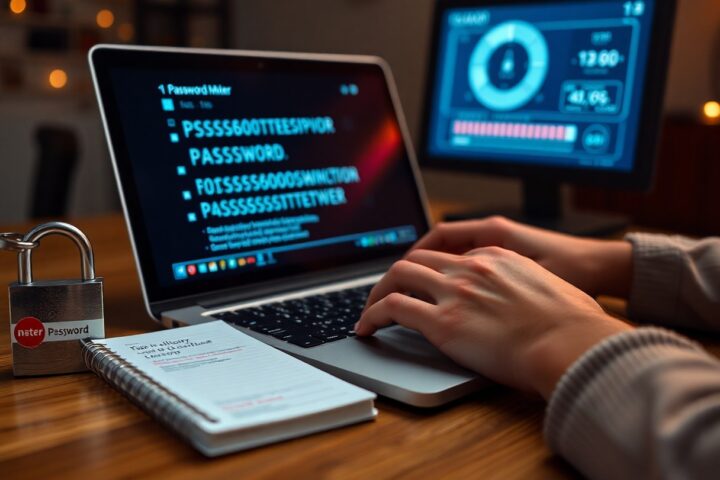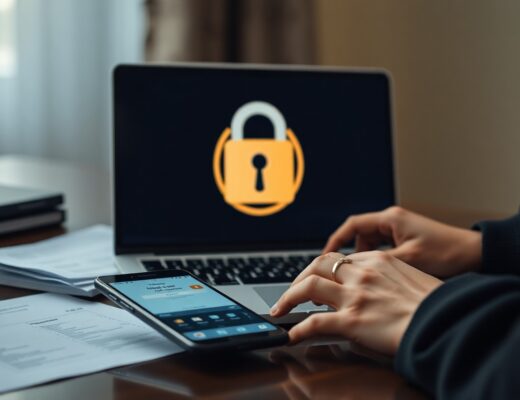Passwords serve as the first line of defense against unauthorized access to your sensitive information. By following best practices for creating strong passwords, you can significantly enhance your online security. This guide will provide you with necessary tips to develop complex, unique passwords that are difficult for attackers to guess, ensuring your digital life remains protected.
Understanding Password Complexity
Your passwords must be complex to effectively protect your personal information. Password complexity involves a combination of length, character variety, and unpredictability, which together make it much harder for cybercriminals to guess or crack your passwords. By ensuring that your passwords meet these complexity requirements, you can significantly enhance your online security and reduce the risk of unauthorized access to your accounts.
The Importance of Length
Understanding password length is vital for creating secure passwords. Longer passwords are generally more secure as they take significantly more time and resources for attackers to crack. Aim for a minimum of 12 to 16 characters, as this length provides a solid foundation for your password’s effectiveness against automated hacking tools.
Character Variety and Strength
Any strong password incorporates a variety of characters, including uppercase letters, lowercase letters, numbers, and special symbols. By using a mix of these elements, your password becomes more difficult for attackers to guess. A diverse set of characters increases the total number of possible combinations, further protecting your accounts from breaches.
Understanding the role of character variety in password strength is key to safeguarding your information. Utilizing different types of characters not only helps in achieving the desired complexity, but it also impedes common techniques used in password cracking, such as dictionary attacks. When you create a password with a combination of letters, numbers, and special symbols, each addition exponentially increases the complexity, making it much less likely for anyone to successfully guess it. Prioritize incorporating these varied elements into your password strategy for enhanced security.
Avoiding Common Pitfalls
Any attempt to create strong passwords can be undermined by common mistakes. It’s vital to be aware of these errors to ensure that your passwords remain secure. Avoiding these pitfalls will help safeguard your accounts against unauthorized access and breaches, ultimately protecting your sensitive information.
Don’t Use Personal Information
Above all, using personal information such as your name, birthdate, or phone number in your passwords can make them easier to guess. Cybercriminals often use social engineering tactics and basic research to deduce your passwords. Opt for random combinations of characters instead, ensuring maximum security for your accounts.
Avoiding Repeated Passwords
Against the odds, many individuals fall into the trap of using the same password across multiple platforms. This practice can lead to a nightmare scenario where a breach on one site compromises all of your accounts. Always commit to using unique passwords for each login to maintain the integrity of your personal data.
Password reuse can feel convenient, especially since many people struggle to remember multiple unique passwords. However, if one service experiences a data breach, attackers often test those passwords on other popular sites. To mitigate this risk, consider using a password manager, which can securely store and generate unique passwords for each of your accounts, ensuring that your digital presence remains safe and secure.
Utilizing Password Managers
While creating strong passwords is imperative, managing them can be challenging. Password managers simplify this task by securely storing, generating, and autofilling your passwords across various accounts. By utilizing these tools, you can enhance your online security without the burden of remembering each unique password.
Benefits of Password Management
Among the numerous benefits of password management, the most significant is the ability to create complex and unique passwords for every account, reducing the risk of unauthorized access. Additionally, password managers can save you time by automating the login process and enabling you to focus on more important tasks.
Choosing the Right Password Manager
Above all, selecting a reliable password manager involves considering factors such as security features, ease of use, compatibility with your devices, and customer support. A well-chosen password manager will not only protect your information but also streamline your online experience.
Managers vary significantly in functionality and features, so it’s imperative to evaluate options based on your personal needs. Look for one that offers robust encryption, multi-factor authentication, and ease of integration with your devices and web browsers. Additionally, consider whether it provides cloud syncing for convenient access across all your platforms, helping you maintain secure access to your accounts wherever you are.
Implementing Two-Factor Authentication
Keep your accounts secure by implementing two-factor authentication (2FA). This additional layer of security requires not only your password but also a second form of verification, making it significantly more difficult for unauthorized individuals to gain access. By using 2FA, you can enhance the overall protection of your sensitive information, providing peace of mind in today’s digital landscape.
What is 2FA?
Between your password and a second verification step, two-factor authentication (2FA) is a security measure that combines two different methods to confirm your identity. This could involve something you know, like your password, alongside something you have, such as a mobile device or authentication app that generates a one-time code.
Enhancing Security with 2FA
By activating 2FA, you significantly improve the security of your accounts. Even if someone manages to steal your password, they would still need access to your second authentication method to gain entry. This dual approach deters cyber attackers, as they face an added barrier when attempting unauthorized access.
Understanding how 2FA strengthens security is key to protecting your online presence. Each time you log in, the second factor acts as an obstacle, making it more challenging for hackers to infiltrate your accounts. Options like SMS codes, authenticator apps, or hardware tokens provide diverse methods for secondary verification, allowing you to choose one that suits your needs best. By incorporating 2FA into your security strategy, you not only safeguard your accounts but also contribute to a more secure online environment overall.
Regularly Updating Passwords
To keep your accounts secure, regularly updating your passwords is imperative. Frequent changes help protect your information from potential breaches, especially if your previous password has been compromised or shared. Setting a schedule for updates, such as every three to six months, can help maintain robust security practices and minimize risks associated with stagnant passwords.
When to Update
When you suspect that your password has been compromised, or after you’ve received notifications of a data breach involving a service you use, it’s time to update your password immediately. Additionally, consider updating your passwords if you’ve shared them with anyone or if your passwords are too old, even in the absence of suspicious activity.
Best Practices for Updates
An effective way to update your passwords is to create a system that incorporates unique and varied passwords across your accounts. This could involve generating complex combinations of letters, numbers, and symbols, or using a reliable password manager to keep track of your updates safely.
Due to the increasing sophistication of cyber threats, it’s advisable to update your passwords using strong and unique combinations. Avoid using easily guessed information, such as birthdays or common words. Instead, create phrases or utilize a random password generator. Following your updates, always enable two-factor authentication whenever possible, providing an extra layer of security to your accounts.
Educating Users on Security
Once again, reinforcing the importance of security awareness among users can significantly reduce the risk of cyber threats. By educating yourself and others about best practices and potential dangers, you contribute to a more robust security environment. This includes understanding the significance of strong passwords and the implications of poor digital hygiene. Regularly sharing updated information about security can help you stay one step ahead of potential attackers.
Training and Awareness
Security training can empower you with the knowledge needed to protect your personal and professional information. Encourage participation in workshops or seminars that focus on password management and general security practices. Regular discussions on relevant topics can help you remain vigilant and informed about the evolving threat landscape.
Recognizing Phishing Attempts
Recognizing phishing attempts protects you from falling victim to scams. Phishing attacks often come in the form of emails or messages that appear legitimate but aim to steal your sensitive information. Being aware of common tactics used by cybercriminals can greatly enhance your defenses.
Training on how to identify phishing attempts is vital. Familiarize yourself with signs such as suspicious URLs, spelling and grammatical errors, and unsolicited requests for personal information. Pay attention to the sender’s email address, as many phishing attempts use slight variations of legitimate addresses to deceive you. By honing your ability to recognize these threats, you build a stronger security posture for yourself and your organization.
Final Words
Summing up, creating strong passwords is important to safeguarding your online presence. You should use a mix of upper and lower-case letters, numbers, and special characters to make your passwords more complex. It’s beneficial to avoid easily guessed personal information, and consider using a passphrase for added security. Regularly updating your passwords and utilizing a password manager can further enhance your security. By adopting these best practices, you significantly reduce the risk of unauthorized access to your accounts.




